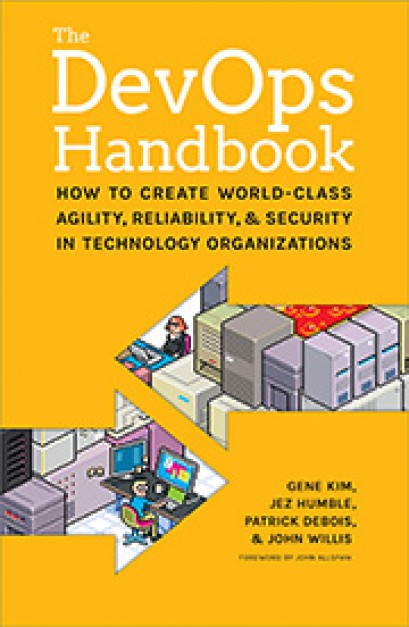23 March 2023

Kubernetes (K8s) has become the go-to platform for container orchestration, providing scalability, flexibility, and agility for implementing a DevOps culture. However, as the use of Kubernetes continues to grow, so does the need for compliance and security measures. Organisations must ensure their setups comply with regulatory frameworks and standards. Development teams must address an attack surface's unique challenges while maintaining their DevOps and DevSecOps workflows.
Before we delve into the challenges of Kubernetes compliance, it's essential to understand the regulatory frameworks and standards that apply. Here are some of the key regulations and their short explanations:
Achieving Kubernetes compliance can be complex and challenging for a DevOps team. It requires a comprehensive understanding of the regulatory frameworks and standards that apply to your industry. Additionally, deployments are often dynamic and rapidly changing, making it challenging to maintain compliance over time.
The Kubernetes attack surface refers to all the deployment components that an attacker can target. These components include:
Understanding the components that an attacker can target is essential to developing an effective security strategy. By identifying the parts of the Kubernetes deployment that are most vulnerable to attack, organisations can implement appropriate security measures to protect their deployments.
One of the main challenges of achieving Kubernetes compliance is managing the complex architecture of a deployment. K8s is a highly flexible and customisable platform that allows organisations to deploy and manage their containerised applications in a dynamic and scalable manner. However, the same flexibility that makes K8s so powerful makes it challenging to manage from a compliance perspective.
Ephemeral State
Kubernetes designers have created the platform to allow for the dynamic starting and stopping of containerised applications. Another challenge in achieving K8s compliance is managing the ephemeral state. Destroying a container can lead to losing temporary data stored within it. Organisations must implement appropriate data backup and recovery processes to manage an ephemeral state to prevent data loss during a failure.
Lack of Holistic Visibility
A lack of holistic visibility is another challenge to achieving Kubernetes compliance. Kubernetes deployments often consist of multiple clusters, nodes, and containers, making it difficult to gain a complete picture of the potential security issues of the deployment. Achieving holistic visibility requires monitoring and logging solutions that can provide real-time insights into the security status of the Kubernetes deployment.
Scalability
The designers of K8s deployments often prioritise high scalability, which can challenge implementing appropriate security measures. For example, as the number of nodes and containers in a K8s deployment increases, it can become more challenging to monitor and manage the security posture of the deployment.
Existing Kubernetes compliance solutions often have limitations that can make it challenging to achieve compliance. For example, some compliance solutions are not explicitly designed for K8s, making it difficult to address the unique challenges a surface poses. Additionally, some compliance solutions need more automation and integration capabilities to manage a dynamic Kubernetes deployment effectively.
In 2020, the software development company GitLab announced that it had discovered a vulnerability in its Kubernetes management console that could allow attackers to bypass authentication and access a GitLab server. A misconfiguration in the K8s deployment allowed unauthenticated access to the GitLab server's API, resulting in the vulnerability.
To overcome these limitations, GitLab developed a custom compliance solution designed explicitly for Kubernetes. The solution included automated scanning and remediation capabilities that enabled GitLab to quickly detect and address vulnerabilities in the environment. Additionally, the solution was integrated with GitLab's existing DevOps tools, allowing GitLab to manage compliance as part of its overall development workflow.
The consequences of failing to achieve Kubernetes compliance can be severe. Organisations that fail to comply with regulatory frameworks and standards can face fines, legal action, and reputational damage. Additionally, failing to secure a deployment can result in data breaches, downtime, and other security incidents that can disrupt business operations and damage customer trust.
In 2019, Capital One, a US-based bank, suffered a significant data breach caused by a misconfigured firewall in its AWS environment. The breach exposed the personal information of over 100 million Capital One customers, including names, addresses, and credit scores.
As a result of the breach, Capital One faced several consequences. In addition to the reputational damage caused by the breach, the bank also faced significant financial penalties. The US Office of the Comptroller of the Currency (OCC) fined Capital One $80 million for failing to manage its risk environment adequately. The bank also faced a class-action lawsuit from customers affected by the breach, which resulted in a $5 million settlement.
In 2018, Tesla suffered a data breach caused by a Kubernetes pod exposed to the public cloud without password protection. Hackers infiltrated Tesla's K8s console and exposed access credentials to Tesla's AWS environment within one pod. This incident exposed sensitive data, including vehicle telemetry data, and potentially allowed attackers access to Tesla's production systems.
Following the incident, Tesla implemented several measures to improve compliance and security. These measures included implementing stricter access controls, using network segmentation to isolate Kubernetes clusters, and using automated tools to detect and respond to security incidents.
According to an article in The Register, "The response showed how security professionals need to approach Kubernetes as a dynamic, ever-changing environment, constantly updated and improved in line with best practices and ongoing assessment."
This incident highlights the importance of implementing best practices for K8s compliance and security and the need for ongoing monitoring and improvement to prevent and respond to security incidents.
Now that we've discussed the challenges of achieving compliance, let's dive into some best practices for maintaining a secure and compliant Kubernetes deployment.
1. Understand the Regulatory Frameworks and Standards that Apply to Your Industry
The first step to achieving Kubernetes compliance is understanding the regulatory frameworks and standards that apply to your industry. Understanding the regulatory frameworks and standards that apply to your industry will help you identify the compliance requirements you must meet and guide your approach to managing compliance.
2. Manage Access Control
Managing access control is critical to achieving Kubernetes compliance. To ensure users have the appropriate level of access to resources, it is essential to properly configure Kubernetes' complex RBAC (Role-Based Access Control) system. Misconfigurations can lead to unauthorised access and compliance issues.
3. Use a Secrets Management System to Securely Store and Manage Sensitive Data
Kubernetes deployments often involve sensitive data, such as passwords, API keys, and certificates. Using a secrets management system to store and manage this data securely can help you maintain compliance and avoid data breaches.
4. Regularly Review and Update Your Kubernetes Configurations to Ensure Compliance Over Time
Kubernetes deployments are dynamic and rapidly changing, making it challenging to maintain compliance over time. Reviewing and updating your Kubernetes configurations helps ensure your deployment remains compliant as it evolves.
5. Use a Container Registry to Store and Manage Container Images Securely
Using a container registry to store and manage container images can help you maintain compliance by ensuring that your images are up-to-date and secure. Container registries provide:
6. Implement Automation Tools to Streamline Compliance Tasks
Compliance tasks can be time-consuming and resource-intensive. Organisations can streamline compliance tasks by implementing automation tools and ensuring consistent and accurate completion.
7. Monitor and Manage Compliance Across the Entire Organisation
Finally, monitoring and managing compliance across the entire organisation is essential, not just within your Kubernetes deployment. Organisations must implement processes and tools to manage compliance across all applications and infrastructure, including cloud services, databases, and other IT assets.
Maintaining a secure and compliant Kubernetes deployment is a complex task that requires a deep understanding of the regulatory frameworks and standards that apply to your specific industry. The Kubernetes attack surface, complex architecture, ephemeral state, lack of holistic visibility, scalability, and limitations of existing Kubernetes compliance solutions pose significant challenges to achieving compliance.
By implementing best practices such as managing access control, using a secrets management system, regularly reviewing and updating Kubernetes configurations, and implementing automation tools, organisations can maintain a secure and compliant cloud environment in a dynamic Kubernetes setup. Monitoring and managing compliance across the entire organisation, including all applications and infrastructure, is also essential.
With the right approach to Kubernetes compliance, organisations can avoid the consequences of non-compliance, protect sensitive data, and ensure the security of their Kubernetes deployments

